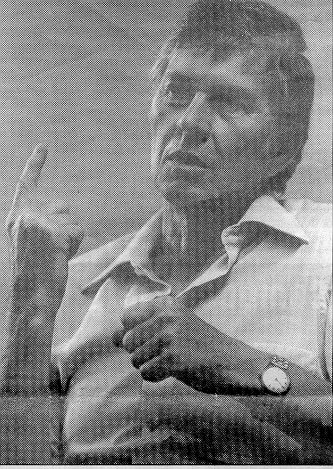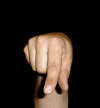William C. Stokoe Jr.
(July 21, 1919 - April 4, 2000)

|
Father of ASL |
Stokoe's research on ASL linguistics, personal advocacy and published works resulted into the recognition that the American Sign Language is a true, fully formed, human language with its own syntax, semantics and grammatical structures, thus overcoming the contentions of linguists that it was little more than a rudimentary imitation of the spoken word. |
Dr. William C. Stokoe (pronounced STOH-key) Jr., a renowned linguistics pioneer, a Gallaudet University professor emeritus of linguistics and one of the most influential hearing individuals in the Deaf community who was known throughout the
Deaf community as the Father of ASL for his significant contributions to ASL (American Sign Language). William C. Stokoe was born in July 1919 in New Hampshire.
He attended Wells College in 1937 with his intention to study physical
chemistry but it consumed time and money. So, he turned his interest to English
courses. He later received his Ph.D. in English in 1946 and taught English
at Wells College for seven years.
|
|
|
|
|
stomping feet and throwing things |
|
(party guests tend to congregate in kitchen because of better lighting and easier to see everyone signing.) |
|
where are you from? what schools did you study in? who are your parents?...etc. |
"nice to meet you" |
specific gestures
|
|
|
|
|
|
|
|
|
|
|
|
|
|

American Sign language Fingering Alphabet
 |
 |
 |
 |
 |
 |
 |
 |
 |
 |
 |
 |
 |
 |
 |
 |
 |
 |
 |
 |
 |
 |
 |
 |
| |
|
 |
 |
|
|
|
Definition of ASL
A short name for American Sign Language
It is a natural and real language.
It is the signed language of the Deaf World in the U.S. It is visual-gestural and visual-manual.
It has it's own grammar and syntax. It is not based on English but has a structure that more closely resembles French. It is the third most used language in America.
|
|
|
|
|
with rules of word and sentence formation. |
|
and palm orientation or location of a hand) |
(e.g., consonants and vowels) |
|
|

William Stokoe's biography - Dedicated to Father of ASL.
(Please click on the down arrow on the right side of the text box below and then you'll choose one of the sites by clicking on to the one of the titles)
Sign My Guestbook
![]() View My Guestbook
View My Guestbook
If you'd like to e-mail to a friend, then click this picture.


number of visitors who view this site